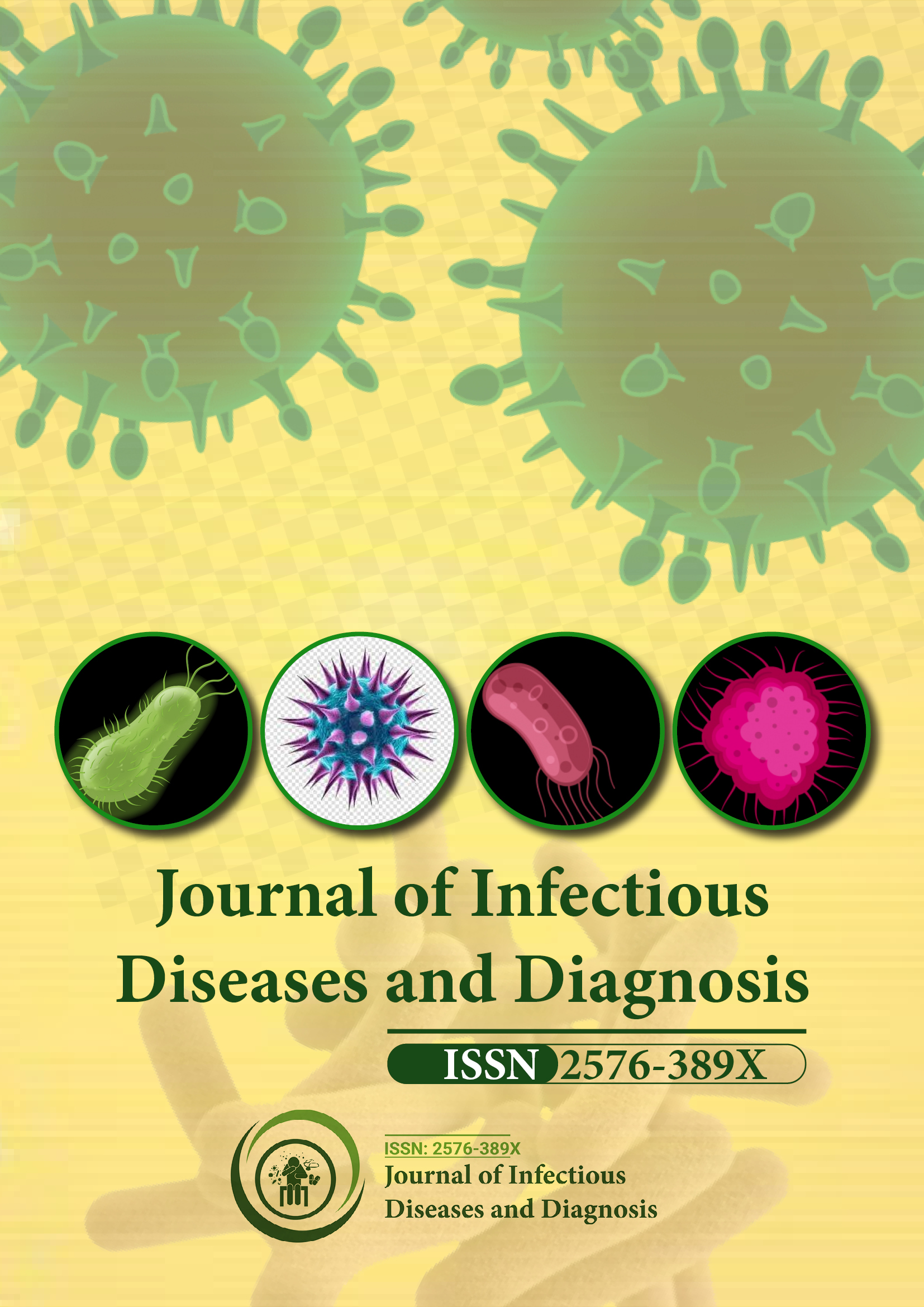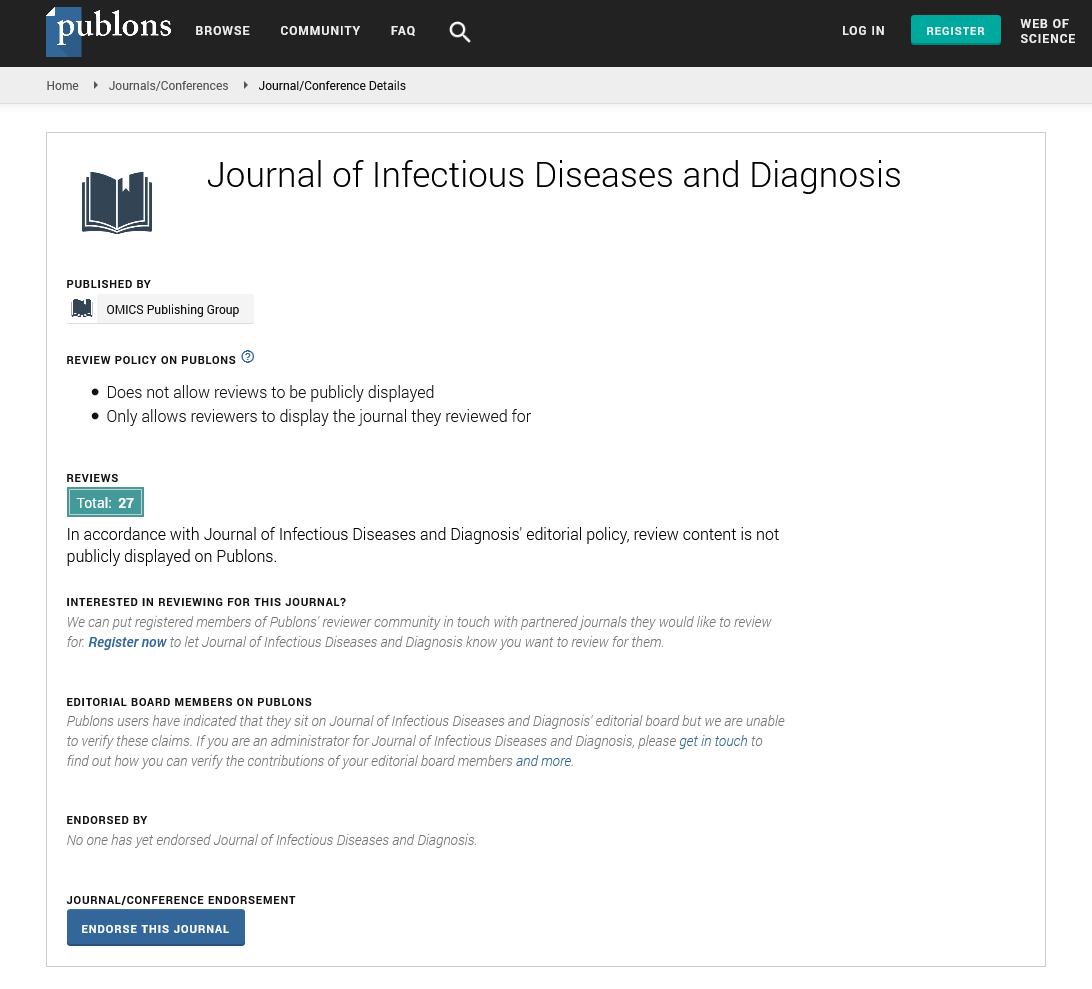Indexed In
- RefSeek
- Hamdard University
- EBSCO A-Z
- Publons
- Euro Pub
- Google Scholar
Useful Links
Share This Page
Journal Flyer

Open Access Journals
- Agri and Aquaculture
- Biochemistry
- Bioinformatics & Systems Biology
- Business & Management
- Chemistry
- Clinical Sciences
- Engineering
- Food & Nutrition
- General Science
- Genetics & Molecular Biology
- Immunology & Microbiology
- Medical Sciences
- Neuroscience & Psychology
- Nursing & Health Care
- Pharmaceutical Sciences
Perspective - (2024) Volume 9, Issue 3
The Role of Pro-Inflammatory Cytokines in Hyperresistinemia
Lisa Fernando*Received: 01-May-2024, Manuscript No. JIDD-24-26002; Editor assigned: 03-May-2024, Pre QC No. JIDD-24-26002 (PQ); Reviewed: 20-May-2024, QC No. JIDD-24-26002; Revised: 27-May-2024, Manuscript No. JIDD-24-26002 (R); Published: 03-Jun-2024, DOI: 10.35248/2576-389X.24.09.272
About the Study
Inflammation is a critical physiological response to injury or infection, but when it becomes chronic, it can lead to a variety of health issues. One such issue is hyperresistinemia, characterized by elevated levels of resistin, a hormone secreted by adipocytes and immune cells. Resistin has been linked to inflammation, insulin resistance, and cardiovascular diseases. Understanding the inflammatory cascade leading to hyperresistinemia is essential for developing effective therapeutic strategies to mitigate its adverse health impacts.
The inflammatory cascade begins with an initial trigger, such as infection, injury, or exposure to certain environmental factors. These triggers activate the innate immune system, leading to the release of pro-inflammatory cytokines like Tumor Necrosis Factor-alpha (TNF-α), Interleukin-6 (IL-6), and Interleukin-1 beta (IL-1β). These cytokines play a major role in regulating the immune response and are critical in the pathogenesis of inflammation-induced metabolic disturbances.
Resistin itself is not just a byproduct of inflammation; it actively participates in the inflammatory process. Research has shown that pro-inflammatory cytokines such as TNF-α and IL-6 can induce the expression of resistin in adipocytes and immune cells. This creates a feedback loop where increased resistin levels further stimulate the production of these cytokines, perpetuating the inflammatory state. This cycle is a crucial factor in the development and maintenance of chronic inflammation.
In humans, hyperresistinemia is closely associated with obesity and metabolic syndrome. Adipose tissue in obese individuals is often infiltrated by macrophages, which secrete pro-inflammatory cytokines. These cytokines increase the expression of resistin in both adipocytes and the infiltrating immune cells. The elevated resistin levels then contribute to systemic inflammation, exacerbating insulin resistance and promoting the development of type 2 diabetes and cardiovascular diseases.
Resistin’s role in promoting insulin resistance is particularly significant. It interferes with insulin signaling pathways, reducing glucose uptake in muscle and adipose tissue and increasing glucose production in the liver. This impaired glucose metabolism leads to hyperglycemia, a hallmark of type 2 diabetes. Furthermore, resistin can also affect lipid metabolism, contributing to dyslipidemia, which is characterized by elevated levels of triglycerides and Low-Density Lipoprotein (LDL) cholesterol. Dyslipidemia is a major risk factor for cardiovascular diseases, highlighting the multifaceted role of resistin in metabolic disorders.
The liver is a key organ in metabolic regulation and is significantly impacted by hyperresistinemia. Resistin can induce the expression of inflammatory cytokines in hepatocytes, leading to liver inflammation and contributing to Non-Alcoholic Fatty Liver Disease (NAFLD). NAFLD can progress to more severe liver conditions such as Non-Alcoholic Steatohepatitis (NASH), fibrosis, and cirrhosis. The liver inflammation and insulin resistance induced by resistin also contribute to the dysregulation of glucose and lipid metabolism, exacerbating the systemic metabolic disturbances seen in obesity and metabolic syndrome.
The cardiovascular system is another major target of resistin induced inflammation. Resistin promotes the expression of adhesion molecules on endothelial cells, facilitating the attachment and infiltration of immune cells into the vascular wall. This process contributes to the development of atherosclerosis, characterized by the formation of plaques within the arteries. Atherosclerosis is a leading cause of heart attacks and strokes. Additionally, resistin can directly affect cardiac function by inducing hypertrophy of cardiomyocytes and increasing fibrosis, leading to impaired cardiac function and heart failure.
Given the significant role of resistin in inflammation and metabolic diseases, targeting resistin and its signaling pathways presents a potential therapeutic approach. Anti-inflammatory treatments that reduce the levels of pro-inflammatory cytokines like TNF-α and IL-6 could decrease resistin levels and break the inflammatory cycle. Additionally, specific inhibitors of resistin or its receptors could be developed to directly block its effects on glucose and lipid metabolism. Lifestyle interventions, such as weight loss and increased physical activity, can also reduce resistin levels by decreasing adipose tissue inflammation.
Conclusion
In conclusion, hyperresistinemia is a significant factor in the inflammatory cascade associated with obesity and metabolic syndrome. The interplay between pro-inflammatory cytokines and resistin creates a vicious cycle that perpetuates chronic inflammation, insulin resistance, and cardiovascular diseases. Understanding the mechanisms driving this inflammatory cascade is crucial for developing effective therapies to reduce resistin levels and mitigate its adverse effects on health. By targeting the inflammatory pathways involved in resistin regulation, it may be possible to improve metabolic health and reduce the risk of associated diseases.
Citation: Fernando L (2024) The Role of Pro-inflammatory Cytokines in Hyperresistinemia. J Infect Dis Diagn. 9:272.
Copyright: © 2024 Fernando L. This is an open-access article distributed under the terms of the Creative Commons Attribution License, which permits unrestricted use, distribution, and reproduction in any medium, provided the original author and source are credited.

